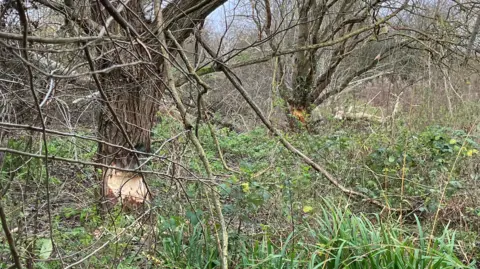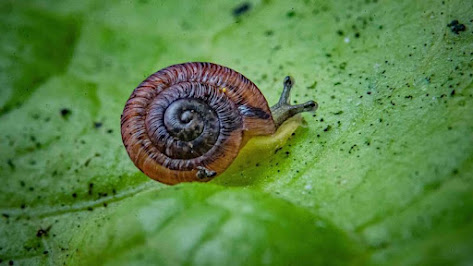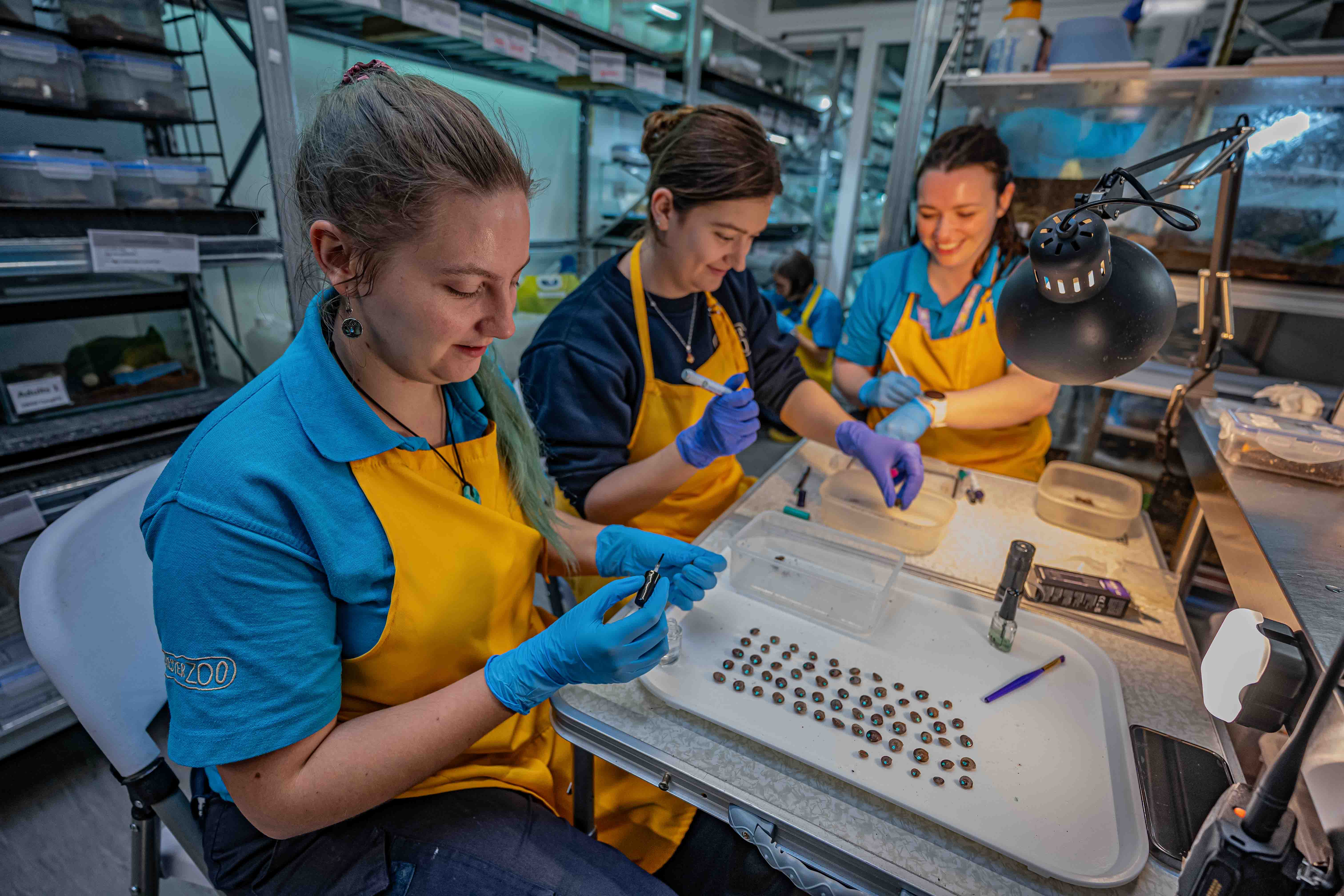Smartphone app can help reduce opioid use and keep patients in treatment, UT Health San Antonio study shows
SAN ANTONIO, Dec. 30, 2024 – Patients with opioid use disorder can reduce their days of opioid use and stay in treatment longer when using a smartphone app as supportive therapy in combination with medication, a new study by The University of Texas Health Science Center at San Antonio (UT Health San Antonio) shows.
The cohort study of 600 underserved patients found that those who chose to use the app – which combines contingency management behavioral therapy and recovery support from peers – and alongside medication, reduced their days of opioid use by 35% compared with those treated with medication only. Additionally, app users remained in treatment nearly 19% longer than those treated with medication alone.
“These findings suggest that augmenting medication for opioid use disorder with app-based contingency management may provide clinical benefits for underserved patients,” said Elise Marino, PhD, director of research operations at UT Health San Antonio’s Be Well Institute on Substance Use and Related Disorders. “Expanding the availability of app-based contingency management may contribute to decreasing the immense societal, economic and personal burden of opioid use.”
Marino is lead author of the study, titled, “Smartphone App-Based Contingency Management and Opioid Use Disorder Treatment Outcomes,” published Dec. 2 in JAMA Network Open. The other authors also are with UT Health San Antonio’s Department of Psychiatry and Behavioral Sciences and the Be Well Institute.
A need to augment medication
Opioid use disorder continues to be a national crisis, contributing to substantial morbidity and mortality. Its annual societal cost in the United States hit $968.9 billion in 2018, the study notes.
Medication for opioid use disorder, or MOUD – including methadone, buprenorphine and naltrexone – is recognized as the only evidence-based treatment for the condition. This first-line treatment has been shown to significantly decrease opioid-related morbidity and mortality, and with consistent cost-saving benefits.
However, some patients still experience difficulties reducing opioid use and staying with their treatment, pointing to a need to augment MOUD. Many conditions benefit from dual treatment of medication and therapy. One therapy is contingency management, or CM, which provides financial incentives for accomplishing treatment goals.
This therapy traditionally has been delivered in clinics, with the goal of an opioid-negative finding from urine drug screens. While findings have been mixed, several reviews and studies have found that individuals treated with MOUD plus CM had better retention and fewer opioid-positive results from urine drug screens.
A long-standing limitation, however, is that patients are required to attend multiple in-person appointments per week for the therapy. With the recent COVID-19 pandemic, many were unwilling to make in-person CM visits. Additional access barriers, such as transportation, distance from the clinic and arranging child care, have supported other options like telehealth and leveraging new technologies.
There’s an app
One such technology is the WEconnect Health CM smartphone app. The app delivers evidence-based CM embedded in a recovery-oriented framework. In addition to providing substance-related behavioral targets, it permits patients to set daily goals that are personally meaningful, both substance use-related and otherwise, like attending a Narcotics Anonymous meeting, going for a walk or reading.
The app also includes a platform for tracking patients’ progress and payment, and provides encouragement for completing their daily goals. Additionally, WEconnect offers 1-to-1 peer support and online meetings facilitated by certified peers. In contrast to traditional CM, the app permits patients to make decisions regarding their own goals for treatment and to explore recovery through peer support services available anywhere and accessible outside of normal clinic hours.
For the new research, the scientists set out to evaluate whether augmenting MOUD with app-based CM is associated with fewer days of opioid use at the end of treatment and greater retention than treatment with MOUD only.
The retrospective cohort study, which refers to research that follows a group of people over time, used data from Nov.1, 2020, to Nov. 30, 2023, collected from opioid treatment programs across Texas. The cohort included 600 individuals aged 18 years or older who were uninsured or underinsured and who chose to receive MOUD only or MOUD plus CM delivered by the WEconnect smartphone app.
Those who chose to receive MOUD plus app-based CM reported a mean duration of 8.4 days of opioid use at the end of treatment compared with 12 days for those who chose to receive MOUD only. Retention analysis showed that patients who chose to receive MOUD plus app-based CM stayed with their treatment for a mean duration of 290.2 days, compared with 236.1 days for those choosing to receive MOUD only.
“These results are promising, and they highlight the potential importance of a patient’s decision to use app-based CM,” the researchers concluded. “Despite the challenges of engaging patients in other app-based interventions, adding recovery-oriented, app-based CM may be one way to enhance clinical care and meet the growing needs of historically underserved patients taking MOUD.”
UT Health San Antonio is a world-class research university, ranking at the top 5% among institutions globally for clinical medicine according to U.S. News & World Report. It is No. 12 in the world among universities for the impact of its discoveries – in normalized citation impact, which compares the number of citations its research receives per paper to the average for similar published work, a recognized core measure of research impact.
Smartphone App-Based Contingency Management and Opioid Use Disorder Treatment Outcomes
Elise N. Marino, Tara Karns-Wright, Matthew C. Perez, Jennifer S. Potter
First published: Dec. 2, 2024, JAMA Network Open
Link to full study: https://jamanetwork.com/journals/jamanetworkopen/fullarticle/2827185
The University of Texas Health Science Center at San Antonio (UT Health San Antonio), a primary driver of San Antonio’s $44.1 billion health care and biosciences sector, is the largest academic research institution in South Texas with an annual research portfolio of $413 million. Driving substantial economic impact with its six professional schools, a diverse workforce of more than 8,500, an annual expense budget of $1.46 billion and clinical practices that provide 2.6 million patient visits each year, UT Health San Antonio plans to add more than 1,500 higher-wage jobs over the next five years to serve San Antonio, Bexar County and South Texas. To learn about the many ways “We make lives better®,” visit UTHealthSA.org.
Stay connected with The University of Texas Health Science Center at San Antonio on Facebook, Twitter, LinkedIn, Instagram and YouTube.
The Be Well Institute on Substance Use and Related Disorders at UT Health San Antonio is a comprehensive, low-barrier system of care that provides compassionate, evidence-based treatment for substance use and related mental health concerns across Texas. Through its hybrid clinic offering virtual and in-person services, a statewide provider network of more than 140 community partners and wraparound services like peer recovery support, the institute reduces barriers to treatment and supports recovery. It also leads cutting-edge research to advance treatment and conducts workforce training to disseminate best practices. Funded by federal and state sources, the institute is dedicated to expanding access, reducing stigma and improving care for individuals and families affected by substance use disorders. Go to bewelltexas.org.
Journal
JAMA Network Open
Subject of Research
People
Article Title
Smartphone App-Based Contingency Management and Opioid Use Disorder Treatment Outcomes
Brain structure differences are associated with early use of substances among adolescents
Many differences appeared to exist prior to any substance use, pointing to the role brain structure may play in substance use risk, NIH-supported study suggests
A study of nearly 10,000 adolescents funded by the National Institutes of Health (NIH) has identified distinct differences in the brain structures of those who used substances before age 15 compared to those who did not. Many of these structural brain differences appeared to exist in childhood before any substance use, suggesting they may play a role in the risk of substance use initiation later in life, in tandem with genetic, environmental, and other neurological factors.
“This adds to some emerging evidence that an individual’s brain structure, alongside their unique genetics, environmental exposures, and interactions among these factors, may impact their level of risk and resilience for substance use and addiction,” said Nora Volkow M.D., director of NIDA. “Understanding the complex interplay between the factors that contribute and that protect against drug use is crucial for informing effective prevention interventions and providing support for those who may be most vulnerable.”
Among the 3,460 adolescents who initiated substances before age 15, most (90.2%) reported trying alcohol, with considerable overlap with nicotine and/or cannabis use; 61.5% and 52.4% of kids initiating nicotine and cannabis, respectively, also reported initiating alcohol. Substance initiation was associated with a variety of brain-wide (global) as well as more regional structural differences primarily involving the cortex, some of which were substance-specific. While these data could someday help inform clinical prevention strategies, the researchers emphasize that brain structure alone cannot predict substance use during adolescence, and that these data should not be used as a diagnostic tool.
The study, published in JAMA Network Open, used data from the Adolescent Brain Cognitive Development Study, (ABCD Study), the largest longitudinal study of brain development and health in children and adolescents in the United States, which is supported by the NIH’s National Institute on Drug Abuse (NIDA) and nine other institutes, centers, and offices.
Using data from the ABCD Study, researchers from Washington University in St. Louis assessed MRI scans taken of 9,804 children across the U.S. when they were ages 9 to 11 – at “baseline” – and followed the participants over three years to determine whether certain aspects of brain structure captured in the baseline MRIs were associated with early substance initiation. They monitored for alcohol, nicotine, and/or cannabis use, the most common substances used in early adolescence, as well as use of other illicit substances. The researchers compared MRIs of 3,460 participants who reported substance initiation before age 15 from 2016 to 2021 to those who did not (6,344).
They assessed both global and regional differences in brain structure, looking at measures like volume, thickness, depth of brain folds, and surface area, primarily in the brain cortex. The cortex is the outermost layer of the brain, tightly packed with neurons and responsible for many higher-level processes, including learning, sensation, memory, language, emotion, and decision-making. Specific characteristics and differences in these structures – measured by thickness, surface area, and volume – have been linked to variability in cognitive abilities and neurological conditions.
The researchers identified five brain structural differences at the global level between those who reported substance initiation before the age of 15 and those who did not. These included greater total brain volume and greater subcortical volume in those who indicated substance initiation. An additional 39 brain structure differences were found at the regional level, with approximately 56% of the regional variation involving cortical thickness. Some brain structural differences also appeared unique to the type of substance used.
In a post-hoc analysis, the researchers found that many of these brain differences still held even after removing those participants who reported substance initiation prior to collection of their baseline MRIs. The resulting comparison was between those who did not report any substance use initiation and a subgroup of 1,203 participants in the substance use initiation group who did not have any substance use experience when their MRIs were first captured. The results of this secondary analysis suggest that some of these brain structural differences may exist prior to any substance use, challenging the interpretation that such differences are only driven by substance exposure and pointing to an area for further investigation.
While some of the brain regions where differences were identified have been linked to sensation-seeking and impulsivity, the researchers note that more work is needed to delineate how these structural differences may translate to differences in brain function or behaviors. They also emphasize that the interplay between genetics, environment, brain structure, the prenatal environment, and behavior influence affect behaviors.
Another recent analysis of data from the ABCD study conducted by the University of Michigan demonstrates this interplay, showing that patterns of functional brain connectivity in early adolescence could predict substance use initiation in youth, and that these trajectories were likely influenced by exposure to pollution.
Future studies will be crucial to determine how initial brain structure differences may change as children age and with continued substance use or development of substance use disorder.
“Through the ABCD study, we have a robust and large database of longitudinal data to go beyond previous neuroimaging research to understand the bidirectional relationship between brain structure and substance use,” said Alex Miller, Ph.D., the study’s corresponding author and an assistant professor of psychiatry at Indiana University. “The hope is that these types of studies, in conjunction with other data on environmental exposures and genetic risk, could help change how we think about the development of substance use disorders and inform more accurate models of addiction moving forward.”
If you or someone you know is struggling or in crisis, help is available. Call or text 988 or chat at 988lifeline.org. To learn how to get support for mental health, drug or alcohol conditions, visit FindSupport.gov. If you are ready to locate a treatment facility or provider, you can go directly to FindTreatment.gov or call 800-662-HELP (4357).
The Adolescent Brain Cognitive Development Study and ABCD Study are registered service marks and trademarks, respectively, of the U.S. Department of Health and Human Services.
Reference: AP Miller, et al. Neuroanatomical variability and substance use initiation in late childhood and early adolescence. JAMA Network Open. DOI: 10.1001/jamanetworkopen.2024.52027 (2024).
###
About the National Institute on Drug Abuse (NIDA): NIDA is a component of the National Institutes of Health, U.S. Department of Health and Human Services. NIDA supports most of the world’s research on the health aspects of drug use and addiction. The Institute carries out a large variety of programs to inform policy, improve practice, and advance addiction science. For more information about NIDA and its programs, visit www.nida.nih.gov.
About the National Institutes of Health (NIH): NIH, the nation’s medical research agency, includes 27 Institutes and Centers and is a component of the U.S. Department of Health and Human Services. NIH is the primary federal agency conducting and supporting basic, clinical, and translational medical research, and is investigating the causes, treatments, and cures for both common and rare diseases. For more information about NIH and its programs, visit www.nih.gov.
About substance use disorders: Substance use disorders are chronic, treatable conditions from which people can recover. In 2023, nearly 49 million people in the United States had at least one substance use disorder. Substance use disorders are defined in part by continued use of substances despite negative consequences. They are also relapsing conditions, in which periods of abstinence (not using substances) can be followed by a return to use. Stigma can make individuals with substance use disorders less likely to seek treatment. Using preferred language can help accurately report on substance use and addiction. View NIDA’s online guide.
NIH…Turning Discovery Into Health®
Journal
JAMA Network Open
DOI
10.1001/jamanetworkopen.2024.52027
Preclinical study finds surges in estrogen promote binge drinking in females
The hormone estrogen regulates binge drinking in females, causing them to “pregame” – consume large quantities of alcohol in the first 30 minutes after it’s offered, according to a preclinical study led by scientists at Weill Cornell Medicine. The study establishes–for what is thought to be the first time–that circulating estrogen increases binge alcohol consumption in females and contributes to known sex differences in this behavior.
The findings, published Dec. 30 in the journal Nature Communications, could lead to novel approaches for treating alcohol use disorder.
“We know a lot less about what drives alcohol drinking behavior in females because most studies of alcohol use have been done in males,” said senior author Dr. Kristen Pleil, an associate professor of pharmacology. Yet females, too, overindulge and are more susceptible to the negative health effects of alcohol than males.
Recent studies indicate that, during the pandemic lockdown, women increased their heavy alcohol consumption more than men. That behavior has important consequences for women’s health, said Dr. Pleil, “because many studies show this pattern of drinking enhances alcohol’s harmful effects.” Indeed, women had many more alcohol-related hospital visits and complications than men during and since the pandemic.
Peak Levels of Estrogen Associated with Increased Alcohol Consumption
In a 2021 study, Dr. Pleil and her team showed that a specific subpopulation of neurons in a brain region called the bed nucleus of the stria terminalis (BNST) were more excitable in female mice than in males. This enhanced activity correlated with their binge drinking behavior.
But what makes this neural circuit more excitable in females? “Estrogen has such powerful effects on so many behaviors, particularly in females,” Dr. Pleil said. “So, it makes sense that it would also modulate drinking.”
To assess estrogen’s potential involvement, the researchers, including first author Dr. Lia Zallar, who was a graduate student in the Pleil lab at the time of the research, began by monitoring the hormone levels throughout estrous cycle of female mice. Then, they served up the alcohol. They found that when a female has a high level of circulating estrogen, she drinks much more than on days when her estrogen is low.
That enhanced bingeing behavior was reflected in heightened activity in those same neurons in the BNST. “When a female takes her first sip from the bottle containing alcohol, those neurons go crazy,” Dr. Pleil said. “And if she’s in a high-estrogen state, they go even crazier.” That extra boost of neural activity means the mice hit the bottle even harder, particularly within the first 30 minutes after the alcohol was made available, a behavior Dr. Pleil refers to as “front-loading.”
Surprising Discovery: Cell-surface Receptors Allow Estrogen to Act Fast
Although the researchers suspected estrogen would have an effect on drinking, they were surprised by its mechanism of action. This steroid hormone typically regulates behaviors by binding to receptors that then travel to the nucleus, where they alter the activity of specific genes—a process that could take hours. However, Dr. Pleil and her team realized that something else must be happening when estrogen infused directly into the BNST excited the neurons and triggered binge drinking within minutes.
So, the researchers tested estrogen that had been doctored so it could not enter cells and bind to nuclear receptors—a feat of chemical engineering performed by Dr. Jacob Geri, assistant professor of pharmacology at Weill Cornell Medicine. They determined that when estrogen promotes bingeing, the hormone is binding to receptors on the neurons’ surface, where it directly modulates cell-cell communication.
“We believe this is the first time that anybody has shown that during a normal estrous cycle, endogenous estrogen made by the ovaries can use such a rapid mechanism to control behavior,” Dr. Pleil said. That rapid action drives the front-loading of alcohol when estrogen is high.
The team identified the estrogen receptor that mediates this effect and determined that it is expressed in the excited BNST neurons and in neurons from other brain regions that excite them. The researchers are now investigating the signaling mechanisms for this effect, and they will also examine whether the same system regulates drinking in males.
“All of the infrastructure is there in males, too: the estrogen receptors and the basic circuit organization,” Dr. Pleil said. The only difference will be the source of the estrogen, which in males without an ovarian source relies on local conversion of testosterone to estrogen in the brain.
Inhibiting the enzyme that synthesizes estrogens could offer a novel treatment for selectively reducing alcohol consumption when hormone levels surge. An FDA-approved version of such an inhibitor is currently used to treat women with estrogen-sensitive cancers.
“Combining this drug with compounds that modulate the downstream effects of the chemicals produced by the BNST neurons could potentially provide a new, targeted approach for treating alcohol use disorder,” Dr. Pleil said.
Journal
Nature Communications
 Ealing Beaver Project
Ealing Beaver Project





